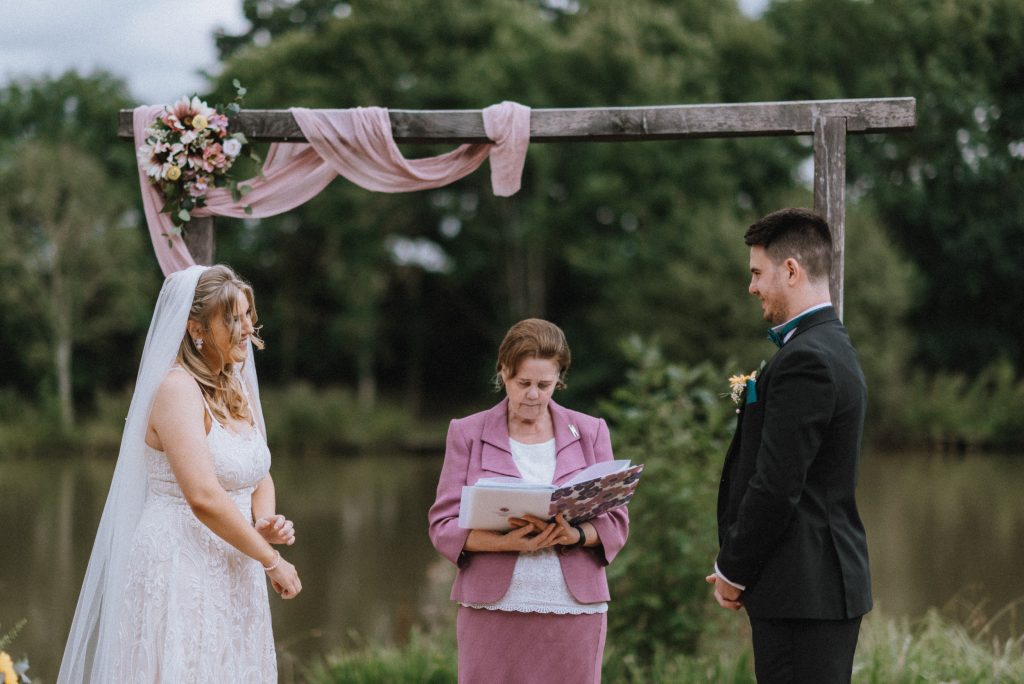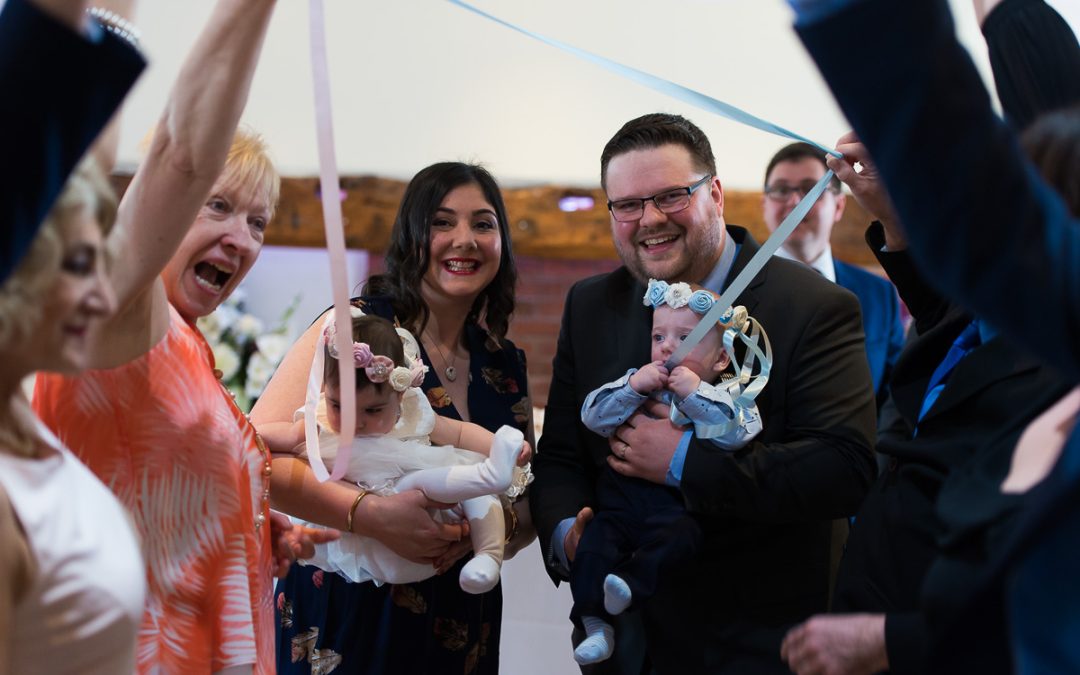Wedding vows are one of the most intimate moments of the ceremony — a moment when you tell the world (and the person you love) what they mean to you and what you promise for the life you’ll share. There’s no single “right” way to do them: they can be simple or elaborate, funny or deeply romantic. The only rule is this: say what’s in your heart.
Here’s a step-by-step guide to help you write vows that are honest, memorable and true to you.
Start With Who This Person Is To You
Begin with a short statement that names the relationship you share. Simple phrases work beautifully:
- “You are my best friend.”
- “You are my partner in crime.”
- “You are my home.”
This first sentence sets the tone and helps your guests understand the heart of your vows.
Say What You Love About Them
 Pick a few things you genuinely love about your partner. Think: what drew you to them? When did you realise you were in love? What do you miss when you’re apart?
Pick a few things you genuinely love about your partner. Think: what drew you to them? When did you realise you were in love? What do you miss when you’re apart?
Jot everything down in a list — big things and small. Later, choose two or three that feel most important and weave them into your vows. Don’t try to name every lovely detail; that would make the ceremony very long and you’ll lose the impact.
Use A Story Or An Anecdote
A short, personal story brings your love to life. It might be the moment you knew, a silly habit that makes you laugh, or a tough time you faced together. A story makes your words vivid and gives guests an intimate glimpse of your relationship.
Tip: Keep the anecdote brief (one or two sentences) so the story enhances rather than eclipses the promise you are about to make.
Make Clear, Specific Promises
Promises are the heart of vows. Use “I promise…” or “I vow…” and be concrete. Specific promises feel more authentic and easier to keep — and they often make people smile:
- “I promise to always listen with an open heart.”
- “I vow to hold the duvet when you hog it.”
- “I promise to be your biggest cheerleader and your quiet support.”
Mix the romantic with the practical; humour is welcome if that reflects you both.
Include The Hard Stuff
Vows are not only for the happy moments. Reassure your partner that you’ll be there in the difficult times too. A line such as “for better and for worse” or “I will stand beside you when things are hard” gives your promise depth and honesty.
Look Toward The Future
 Finish with a forward-looking sentence — a shared hope or a simple vision of life together:
Finish with a forward-looking sentence — a shared hope or a simple vision of life together:
- “Together, I look forward to coffee on rainy mornings and adventures in new places.”
- “I can’t wait to build a home with you, full of laughter and warmth.”
This ending leaves the vows feeling hopeful and whole.
How Long Should They Be?
Aim for about 1–2 minutes when spoken. That’s long enough to be meaningful but short enough to hold everyone’s attention.
Practical writing tips
- Write first, edit later. Let your first draft be messy. You can polish and tighten it afterward.
- Read them aloud. Hearing the words helps you judge tone and length.
- Keep it authentic. Use language that sounds like you — not a romantic movie script (unless that’s genuinely you!).
- Avoid clichés unless they’re meaningful to you. Fresh, specific details are more memorable.
- Decide on the tone. Romantic, humorous, solemn, poetic — whatever fits your relationship. A mix works beautifully.
- Check with your celebrant. If you’re part of a ceremony, send your vows to the celebrant in advance so they can suggest timing or gentle edits.
- Have a printed copy. Even if you plan to memorise some, bring a neat card to read from — nerves are real.
Four Ways To Exchange Vows
There are lovely options depending on what feels right for you:
- Write and read your own individual vows. Each person writes personal vows and reads them aloud.
- Write together and echo. You write together and repeat lines to one another on the day.
- Repeat after me. Your celebrant prepares vows you both approve and you say them line by line.
- Answer “I do.” The celebrant asks questions and you respond, “I do.” (A simple, elegant option that can be very powerful.)
Choose the form that fits your personalities and the tone of your ceremony.
Inclusive Language
If you or your partner don’t identify with gendered terms, use gender-neutral language: “partner”, “beloved”, or use names. Vows should always reflect who you both are. If you wish, include a line that makes clear your shared values or chosen family — those words matter.
Examples — pick one or adapt
 Short & sweet
Short & sweet
I give you my friendship, my trust, and my heart. I promise to laugh with you, to support your dreams and to stand beside you in whatever life brings. With you, I am home.
Romantic & earnest
I promise to listen to you with an open heart, to speak honestly and kindly, and to keep the faith that brought us here. I will celebrate your successes and comfort you when you are down. Today I give you my love and my life.
Funny & tender
I promise to share the remote, to make you tea in the mornings and to steal the duvet only when absolutely necessary. Above all, I promise to be your best friend and your favourite person.
Longer, reflective
I pledge to be your companion and your confidant. I will honour your integrity and respect your independence. I promise to build a home with you that is a sanctuary — one of laughter, hospitality, and warmth. For all the days of our lives, I choose you.
Feel free to take one of these and personalise it with names and little details only you two share.
A Quick Vow Checklist Before You Say “I Do”
- Is it 1–2 minutes when read aloud?
- Does it sound like you when read out?
- Is there at least one specific promise?
- Does it include the “hard stuff” (support in bad times)?
- Have you sent a copy to your celebrant?
- Do you have a printed copy to read from?
Final Thought
Writing your vows is an invitation to speak truly and lovingly. They don’t need to be perfect — they need to be honest. On the most romantic day of your life, be brave and say what you really feel. That authenticity is the most beautiful promise of all.





0 Comments